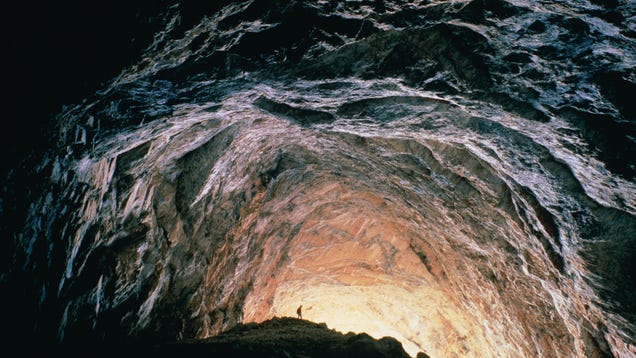
President Obama just created three new National Monuments, protecting over 1 million acres of land in California, Nevada and Texas for the enjoyment of the American people. Where are they, why were they protected and how can you use them? Let’s take a detailed look at each.
This latest round of National Monuments take the total to 19 created or expanded by President Obama under the Antiquities Act, bringing the total area of land that’s been protected during his administration to 260 million acres — more than any other President, even Teddy Roosevelt.
What’s a National Monument? As we explained when we defined all types of public lands and the protections they enjoy, they have similar protections to a National Park and are run by the Park Service, but can be created from federally-owned land by a proclamation from the President, without an act of Congress. That’s a tool that can be used to extend Park-level protection to an at-risk area, quickly and easily. Monuments are also unique in that specific rules, exemptions or conditions can be defined from the beginning that stay with the Monument permanently. So, in these cases, existing OHV, mountain bike and some hunting use has been written into the creation of these monuments. Can’t do those things in a Park!
Since the conservation movement was founded by Republicans and is probably the greatest legacy of that party, you’d think the protection of public lands would enjoy bi-partisan support. But, despite historic support of conservation that continued through the first Bush administration, the public good has given way to the political obstructionism and corporate interests that now plague American politics. An amendment passed by the Republican House last Wednesday, but lather withdrawn, attempted to block public spending in support of the Antiquities Act in Arizona, California, Nevada, New Mexico, Nevada, Oregon and Utah.
That amendment was eerily similar to the April vote by Republican senators in favor of selling off public lands for private energy exploitation. It seems as if the party is attempting to build a case to do that; expect to start hearing much more about it as next year’s elections approach and it’s an issue we’re currently exploring too.
But more on that later. Here’s your new National Monuments:

Basin and Range
Where is it? About a two hour drive north of Las Vegas, Basin and Range is in a remote, largely unpopulated area of Nevada. The Monument’s 704,000 acres span Lincoln and Nye counties and include the Golden Gate, Seaman and Mount Irish mountain ranges.
What is it? “The Garden and Coal Valleys of Nevada are distinguished by their remoteness and pristine condition,” reads the description of the area from the group who lobbied to protect it. “As part of America’s ‘Great Basin,’ these valleys are some of the region’s best examples of basins framed by mountain ranges.”

Why was it protected? When you see pictures and hear about how special this land is, you won’t believe it wasn’t protected before.
Basin and Range forms an important migration corridor for mule deer and pronghorn antelope and also plays home to numerous species of bat, and is home to several endangered species. The region is also an important habitat for the sage grouse (above). Heard of those? You will soon. Preserving them is going to be the American west’s next big environmental battle.
The area is also home to important Native American ruins and artifacts, including rock shelters and the White River Narrows Archeological District which has one of the densest and most well preserved collection of petroglyphs in the country.

Uniquely, the Monument will also include “City,” a massive sculpture created by Michael Heizer, the same artist who made LACMA’s now iconic levitated mass. To quote the New York Times, “More than a mile long, ‘City’ is a kind of modern Chichen Itza in the midst of Garden Valley, a pristine, lunar stretch of stark and unspeakable beauty, an hour’s bumpy drive from the nearest paved road.”
How you can enjoy it: The area includes many dirt roads and 4×4 trails, as well as being popular with backpackers, climbers, spelunkers and mountain bikers. Leviathan Cave’s (top image) entrance is so large, a military helicopter can land in it and is also known for its ice formations during the winter.
The Monument designation should being more trails and open the area to new visitors.

Berryessa Snow Mountain

Where is it? 100 miles long, from north to south, the Monument is also less than 100 miles from the Bay Area and Sacramento. It encompasses 331,000 acres of California’s Inner Coast Range.
What is it? The second largest National Monument in California, after the San Gabriel Mountains, which Obama designated last year. A varied region, the Monument stretches from sea level around Lake Berryessa to the 7,000-foot peaks of Snow and Goat Mountains.

Why was it protected? Animal life is some of the most abundant and varied in the state, including spotted owls, martins and fishers, chinook salmon and steelhead trout, and bald eagles, black bears, otters, coyotes, deer, big horn sheep, Tule elk, lions, and more. Hunting and fishing access will remain!
The land includes an active fault zone and its resultant hot springs and fossil-bearing sediment. Water sheds from the region to fuel the Eel and Sacramento Rivers.
The area is also of archeological importance. Yuki, Nomlaki, Patwin, Pomo, Huchnom, Wappo, Lake Miwok and Wintum peoples all called the area home, the Hudson Bay Company were the original white explorers of the region and the Gold Rush left behind mills, mines and cabins throughout the dense forests.
The local chamber of commerce estimates that the area will benefit to the tune of an extra $26 million in economic activity over the next five years thanks to the Monument designation. Legislation to declare it a Park was stalled in Congress, something Obama was able to resolve using Antiquities.

Photo: Gregory Veen
How you can enjoy it: This is the best news. As stated above, hunting and fishing access will be retained, and the popular (and long) mountain bike trails will stay open too! The popular 4×4 trails will also remain open.
Of course, the whole area is popular with hikers and campers of all descriptions and also includes the closest whitewater to the Bay Area; rafting and kayaking are both good here.
Hang gliding and paragliding are also popular.

Waco Mammoth
Where is it? Yeah, that Waco. The one in central Texas.
What is it? 68,000 years ago, 19 mammoths were trapped in a narrow channel during a flash flood and drowned. Mud from the flood waters buried their bodies. This happened two more times during the subsequent 15,000 years, capturing the remains of more mammoths and even saber tooth tigers. They were buried there, undisturbed, until 1978 when two arrowhead collectors stumbled across a huge bone and took it to a local museum to find out what it was.
Waco Mammoth is now one of the most important paleontological sites in the country.
Why was it protected? Well, mammoth bones, duh. Congressional legislation has twice been introduced to protect the place, but stalled both times. Now, the 5-acre site is protected and will enjoy federal management and investment.
How you can enjoy it: An hour-long tour departs every 30 minutes, taking you around the dig site and showing you both reconstructed mammoth skeletons, fur-covered replicas and even bone in situ, where they’ve been discovered. Visitors learn about the animals, the ice age and paleontology in general.

What Are These Monuments Doing For You?
The Outdoor Industry Association estimates that outdoor recreation, which these monuments facilitate and play home to, puts $650 billion of consumer spending into the US economy, every year and creates 6.1 million jobs for Americans. Even if you don’t go outside, you can appreciate the economic boon this brings to economies near these new Monuments. The entire National Park program costs us taxpayers less per year than a single Stealth Bomber.
By adding these areas to the list of National Parks, they’ll become not only better protected into the foreseeable future, but more accessible to the public as well. That means facilities like roads, parking lots, bathrooms and friendly rangers, but also management plans and real conservation too.
And just in case you’re really caught up in all that political jingoism, let’s look at what everyone’s favorite raptor-riding, communism-defeating Alzheimer’s sufferer has to say about it:
“The preservation of parks, wilderness, and wildlife has also aided liberty by keeping alive the 19th century sense of adventure and awe with which our forefathers greeted the American West. Many laws protecting environmental quality have promoted liberty by securing property against the destructive trespass of pollution. In our own time, the nearly universal appreciation of these preserved landscapes, restored waters, and cleaner air through outdoor recreation is a modern expression of our freedom and leisure to enjoy the wonderful life that generations past have built for us.” — Ronald Reagan
IndefinitelyWild is a new publication about adventure travel in the outdoors, the vehicles and gear that get us there and the people we meet along the way. Follow us on Facebook, Twitter and Instagram.
via Gizmodo
Meet Your Three New National Monuments